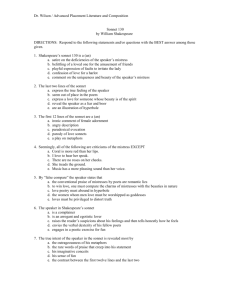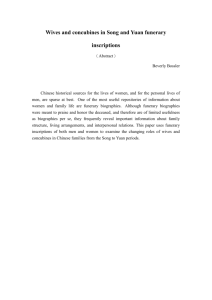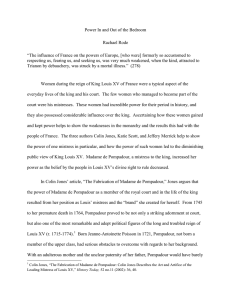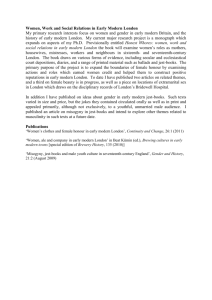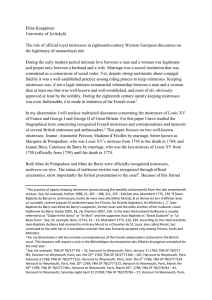The original reason for a man to have concubines was to make sure
advertisement
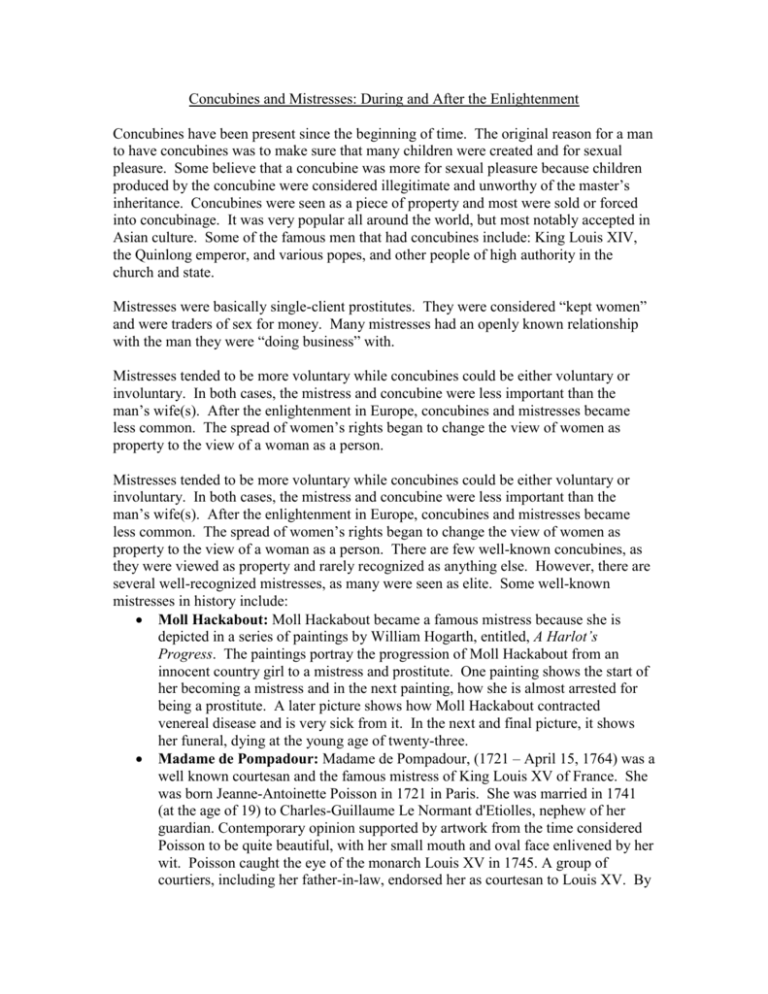
Concubines and Mistresses: During and After the Enlightenment Concubines have been present since the beginning of time. The original reason for a man to have concubines was to make sure that many children were created and for sexual pleasure. Some believe that a concubine was more for sexual pleasure because children produced by the concubine were considered illegitimate and unworthy of the master’s inheritance. Concubines were seen as a piece of property and most were sold or forced into concubinage. It was very popular all around the world, but most notably accepted in Asian culture. Some of the famous men that had concubines include: King Louis XIV, the Quinlong emperor, and various popes, and other people of high authority in the church and state. Mistresses were basically single-client prostitutes. They were considered “kept women” and were traders of sex for money. Many mistresses had an openly known relationship with the man they were “doing business” with. Mistresses tended to be more voluntary while concubines could be either voluntary or involuntary. In both cases, the mistress and concubine were less important than the man’s wife(s). After the enlightenment in Europe, concubines and mistresses became less common. The spread of women’s rights began to change the view of women as property to the view of a woman as a person. Mistresses tended to be more voluntary while concubines could be either voluntary or involuntary. In both cases, the mistress and concubine were less important than the man’s wife(s). After the enlightenment in Europe, concubines and mistresses became less common. The spread of women’s rights began to change the view of women as property to the view of a woman as a person. There are few well-known concubines, as they were viewed as property and rarely recognized as anything else. However, there are several well-recognized mistresses, as many were seen as elite. Some well-known mistresses in history include: Moll Hackabout: Moll Hackabout became a famous mistress because she is depicted in a series of paintings by William Hogarth, entitled, A Harlot’s Progress. The paintings portray the progression of Moll Hackabout from an innocent country girl to a mistress and prostitute. One painting shows the start of her becoming a mistress and in the next painting, how she is almost arrested for being a prostitute. A later picture shows how Moll Hackabout contracted venereal disease and is very sick from it. In the next and final picture, it shows her funeral, dying at the young age of twenty-three. Madame de Pompadour: Madame de Pompadour, (1721 – April 15, 1764) was a well known courtesan and the famous mistress of King Louis XV of France. She was born Jeanne-Antoinette Poisson in 1721 in Paris. She was married in 1741 (at the age of 19) to Charles-Guillaume Le Normant d'Etiolles, nephew of her guardian. Contemporary opinion supported by artwork from the time considered Poisson to be quite beautiful, with her small mouth and oval face enlivened by her wit. Poisson caught the eye of the monarch Louis XV in 1745. A group of courtiers, including her father-in-law, endorsed her as courtesan to Louis XV. By March she had become a regular visitor and king's mistress, and the king installed her at Versailles. He also bought her Pompadour, the first of six residences. In July, Louis made her a marquise, had her legally separated from her husband, and on September 14 she was formally presented at court. Pompadour suffered two miscarriages in the 1750s, and she is said to have arranged lesser mistresses for the king's pleasure to replace herself. Although they did not sleep together after 1750, Louis XV remained devoted to her until her death in 1764 at the age of 42. At the time she was publicly blamed for the Seven Years' War. Nell Gwynne: Nell Gwynne was born February 2, 1650 and died November 14, 1687. She was known as one of the first English actresses, and a mistress of King Charles II. Her relationship with King Charles II began in 1668. They met in a theater in London, as they had neighboring boxes. The king asked her to dinner; however, Nell ended up paying because the king forgot money. She eventually had two sons with Charles: Charles and James Beauclerk. She had a Cinderella story, a real rags-to-riches lifestyle. Moll Hackabout Madame de Pompadour Nell Gwynne Suggested readings: Memoirs of a Geisha, The Good Earth, Fanny Hill, Moll Flanders, Jane Eyre, Annus Mirabilis, Montesquieu’s Persian Letters Suggested Films: Farewell My Concubine, Mulan, Memoirs of a Geisha REFERENCES: Clark, Austin. " Concubinage in Asia." Prof. Pavlac's Women's History Resource Site. 18 December 2001. <http://www.kings.edu/womens_history/pagename.html >. 21 October 2006. Wikipedia. “Mistress (lover).” 17 October 2006. <http://en.wikipedia.org/wiki/Mistress_(lover)>. 21 October 2006
